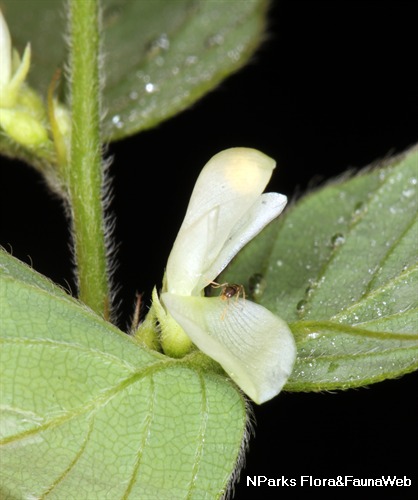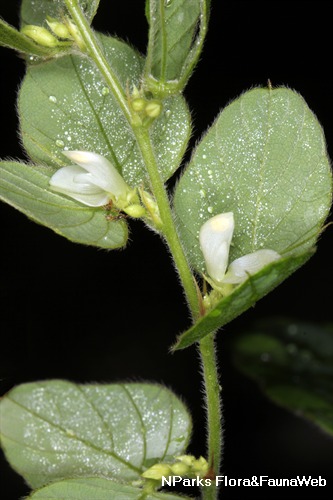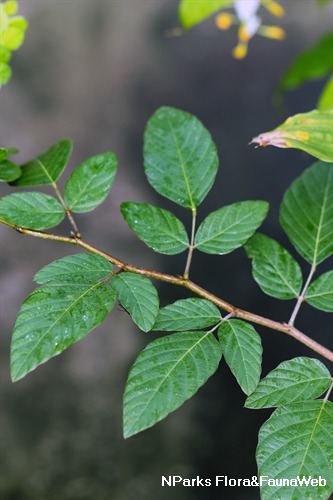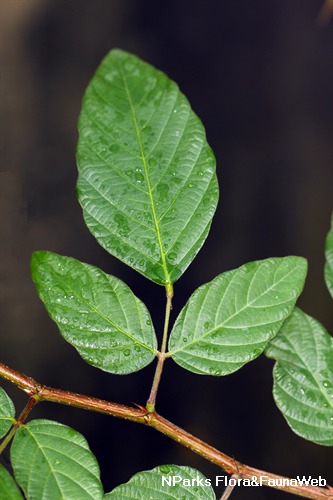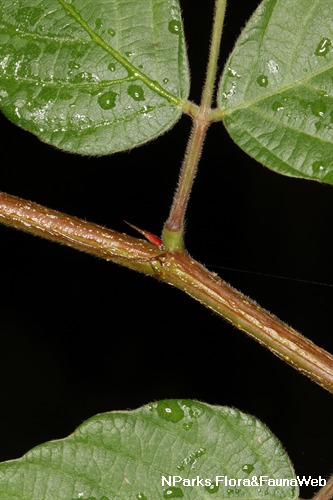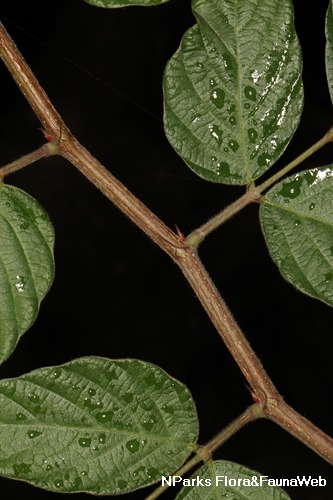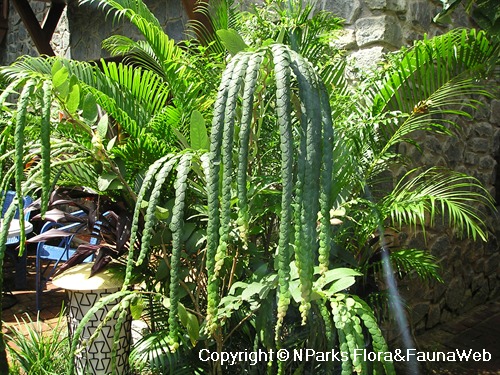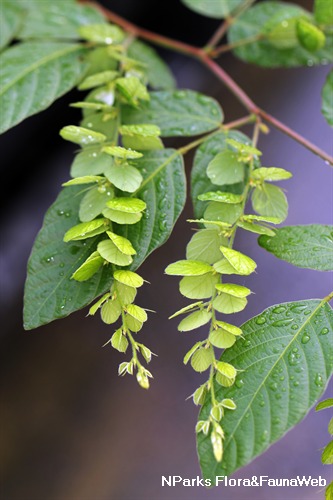
Back
Phyllodium pulchellum (L.) Desv.
| Family Name: | Fabaceae (Leguminosae) |
| Synonyms: | Desmodium pulchellum |
| Common Name: | 排钱树 |
Name
Classifications and Characteristics
| Plant Division | Angiosperms (Flowering Seed Plants) (Dicotyledon) |
|---|---|
| Plant Growth Form | Shrub |
| Lifespan (in Singapore) | Perennial |
| Mode of Nutrition | Autotrophic |
| Maximum Height | 0.5 m to 2 m |
Description and Ethnobotany
| Growth Form | Woody shrub up to 2 m tall. |
|---|---|
| Foliage | Compound leaves are composed of three leaflets. The terminal leaflet is shaped like an egg or oval and is about twice the size of the two lateral leaflets. The upper leaf surface is sparsely hairy, while the veins on the lower surface are densely hairy. |
| Stems | The stem is densely covered in long, white hairs. |
| Flowers | White, pea-shaped flowers occur singly in a long chain, each surrounded by a pair of round, leaf-like structures known as bracts. |
| Fruit | The fruit is a thin, narrow pod (6 mm long, 2.5 mm wide). |
| Ethnobotanical Uses | Medicinal: The leaves and roots are used to treat fever and as a diuretic. |
Plant Care and Propagation
| Light Preference | Full Sun |
|---|---|
| Water Preference | Moderate Water |
| Propagation Method | Seed |
Foliar
| Mature Foliage Colour(s) | Green |
|---|---|
| Foliar Type | Compound (Trifoliate) |
| Foliar Arrangement Along Stem | Alternate |
| Foliar Attachment to Stem | Petiolate |
| Foliar Shape(s) | Non-Palm Foliage (Ovate, Obovate, Elliptical) |
| Foliar Venation | Pinnate / Net |
| Foliar Margin | Sinuate |
| Foliar Apex - Tip | Acute |
| Foliar Base | Rounded / Obtuse |
Floral (Angiosperm)
| Flower & Plant Sexuality | Bisexual Flowers |
| Flower Colour(s) | White, Yellow / Golden |
|---|---|
| Flower Symmetry | Bilateral |
| Individual Flower Shape | Papilionaceous / Pea-shaped |
| Flowering Habit | Polycarpic |
Image Repository
Others
| Master ID | 31920 |
|---|---|
| Species ID | 6322 |
| Flora Disclaimer | The information in this website has been compiled from reliable sources, such as reference works on medicinal plants. It is not a substitute for medical advice or treatment and NParks does not purport to provide any medical advice. Readers should always consult his/her physician before using or consuming a plant for medicinal purposes. |

